Top 18 Tourist Attractions in Porto Portugal
Apparently cut in granite near the mouth of the Douro River, Portugals second city, known locally as Porto, enchants with a rich collection of cultural attractions. The historic heart of Porto is Ribeira. This seaside neighborhood positively insists that you get lost among the maze of narrow streets and browse some of the citys most cherished architectural treasures. In fact, so rare and precious are the buildings that make up this venerable neighborhood that UNESCO has declared a World Heritage Site.
Much of old Porto can be described with a pronounced 18th-century accent. Extravagant Baroque churches and imposing neoclassical buildings punctuate the skyline, their most valuable content displayed in world-class museums set in picturesque squares. Meanwhile, the citys contemporary character is evident in its thriving modern arts scene and alarmingly futuristic music venue. Crossing the bridge to Vila Nova de Gaia is a tourist spot, as is a guided tour around one of the port lodges. A cruise along the Douro should be considered, and for a truly memorable panorama of the city, take a ride on the cable car that slides across the pier.
The imposing Clérigos Tower punctuates the skyline of Porto like a monumental needle. This is the citys most visible landmark, a 75-meter-high rocket excavated in 18th-century granite, and visiting this historic structure should be high on the list of things to do. Youll need a pair of sturdy legs to climb the 240 steps to the top of the tower, but the effort will be rewarded with a breathtaking panorama of the river, coastline and the distant Douro Valley - a panoramic view of the second largest city. Portugal, and an inspiring way for first-time tourists to get their bearings. Commissioned by the Brotherhood of the clergy ( priests ) and designed by the Italian Nicolau Nasoni, Baroque tower complements the adjacent Clergy Church which is also the work of Nasoni. Built between 1732 and 1750, the church itself is a wonderful example of the architects affinity with the Baroque and features an elliptical floor plan, one of the first churches in Portugal built in such a way. But the tower remains the highlight and, day or night, its tapered profile stands out as a historical lighthouse visible from most of the city.
Dating from the mid-nineteenth century, Portos former stock exchange contains a wealth of historical interest. Built on the site of a Franciscan monastery, its sumptuous interior is divided into several rooms and halls, each unique in its appeal and worthy of scrutiny. Pretend you are a wealthy merchant who visits for business while strolling through the Portrait Room with its gallery of uniformed monarchs, and then looking skyward after entering the Golden Room to admire its gilded stucco ceiling. You will be ready for your meeting with the chief in the richly furnished Presidents Hall before joining fellow traders in the richly decorated Court Hearing Room to witness the merchant law acting in due course. You may want to appear in the adjacent jury s Hall before meeting in the magnificent Hall of Nations to mingle with the great and the good. But youll want to leave the best for last by sneaking into the amazing Arabian Room, inspired by the Alhambra of Granada, and the only place that really sells a Stock Exchange tour. In fact, the building is the seat of the Porto Chamber of Commerce, and its members still gather in the classic General Assembly Room.
One of the most unusual things about Porto - and certainly a radical departure from traditional sightseeing options - is the possibility to climb the arches of the Arrabida Bridge , downstream of the better known Dom Luís 1 Bridge . Porto Bridge Climbing offers guided tours of this iconic structure with participants dressed in harness and safe lifeline in order to safely and comfortably scale high heights. Following a narrow pedestrian staircase and wired to a parallel railing, visitors slowly climb the yawning arches to the top of the gap, 65 meters above the Douro River.. The panoramic views of the peripheral city and river mouth are truly memorable. Descending the 262 steps reveals the size and elegance of this twentieth-century engineering marvel, opened in 1963 and currently the only bridge in Europe that can be accessed in this way.
Visitors are wrapped in gold as they enter the beautiful San Francisco church. Its eighteenth-century baroque interior is encrusted with a golden veneer so dazzling and exuberant that most agree that this is one of the finest examples of crafted gold anywhere in the country. In fact, this is an invaluable tourism experience. The gilded carving beautifies the high altar, the columns and the pillars, with only a piece of stone left visible. Watch out for smiling cherubim and grim-faced monks as you head for the north wall and San Franciscos Jesse Tree, a gilded and painted wood family tree that portrays the genealogy of Christ. An extraordinary and seductive artifact, carved between 1718 and 1721, the tree bears fine details seen in the expressions of Jesus, Mary, and Joseph, and other figures, including King David, Solomon, and Jesse himself, who leave the viewers speechless. A walk through the ancient catacombs under the church helps bring visitors back to earth, but there are more treasures from the church monastery to contemplate in the museum later.
Portos riverside neighborhood is a seductive maze of narrow winding streets; zigzag alleys; and low sun-hungry arcades. Facing the Douro River , however, there are mansion terraces painted in mustard, mandarin and tawny tones - the Ribeira is an adventure of color and flavor. A multitude of restaurants and cafes situated under the arches along the pier make this the most popular area of the city for relaxing and socializing. Ribeira Square , the riverside square, is a popular and lively meeting place and vibrates with a young and friendly vibe. This is also a bustling commercial district where grocery stores meet butchers and fishmongers. Small dilapidated cobbler studios echo the laborious pounding of cobbler hammers, and the rustic aroma of freshly baked bread clashes with the salty, salty odor of the Douro. Above all, locals share gossip from balconies or open windows, shouting inexorably through washing lines that flutter in the breeze. The Ribeira is also about history, and to explore this fascinating neighborhood is to discover medieval relics built on Roman foundations. UNESCO loves the place and has long declared it a World Heritage Site.
The grand Dom Luis I Bridge is one of the most emblematic structures in Portugal. Spanning the mighty Douro River to connect Porto to Vila Nova de Gaia on the south bank, the majestic sweeping and two-tiered look of the bridge is a must-have component of the citys proud social fabric. The heavily riveted charcoal gray wrought iron has written Gustave Eiffel everywhere, and was actually an assistant to the great French engineer who built the bridge in 1886. Users use the bridge daily - a road, Avenida da República, runs through the lower deck while the upper span accommodates a subway line. Pedestrians can cross using the narrow pavements on either side of the road, or be really brave and cross the structure using the 60-meter-high top-level trail. A great view of the bridge can be obtained from the terrace of the Serra do Pilar Monastery on the south bank. From here, the whole city forms a fabulous backdrop and the panorama is particularly dramatic at dusk. Dont forget your tripod!
Sightseeing in Porto should always include exploring the citys cathedral. In fact, the breathtaking panorama from the terrace over the streets of the old town and the sleepy Douro River is a great curtain lift and prepares the senses for what is to come. An imposing 12th century landmark, the cathedral has the appearance of a fortress, such is the forbidden appearance of its towers and the dark complexion of its facade. Redeeming features include a beautiful 13th century rosette on the west front and the serene baroque cloisters lined with azure tile .tiles. Take a moment here to soak up the medieval atmosphere and the tranquil setting. From here, a worn 18th-century granite staircase connects with the chapel, which is engulfed in the most impressive tile work. Another notable attraction is the magnificent silver altarpiece in the small chapel to the left of the chancel. Finish your tour by looking over the cathedrals stunning gold and silver treasure, set in the Treasury.
With its long and wide promenade and riverside aspect, Vila Nova de Gaia is an irresistible detour. Easily reachable on foot across the Dom Luis I Bridge , the citys landscaped pier is surrounded by a long line of elegant restaurants and cafés. It is also the starting point of numerous Douro river cruise boats. Adding a wonderfully nostalgic perspective is the fleet of traditional Rabelo boats moored alongside the esplanade. These graceful sailing vessels were used to transport barrels downstream of the Douro harbor properties, and with the Ribeira district in Porto providing a romantic setting, tourists are delighted with an atmospheric landscape, a picture reminiscent of the eighteenth century. For a truly dramatic view, take a ride on the Gaia cable car or cable car. This new and innovative tourist attraction runs along the Gaia River and connects the upper station, near the Serra do Pilar Monastery , with the east end of the esplanade.
Portugals remarkable period of conquest and exploration, the Age of Discovery , is staged with surprising effect in this interactive museum and theme park. The dangerous voyages of 15th century Portuguese navigators navigating fleets of fragile caravels to map unfamiliar waters and map new lands are led to an impressive life through a series of detailed exhibits and displayed animations. But the real adventure begins after boarding a boat and traveling to countries discovered by the likes of Vasco da Gama, who in 1498 mapped a sea route from Portugal to India, and Pedro Álvares Cabral, who arrived in Brazil. in 1500. Using audio headsets, passengers are indulged in the planning and organization that underlies these ambitious sea expeditions and also gain a fascinating insight into the history and culture of the various destinations colonized by the Portuguese during this period. In fact, this is a wonderfully engaging and educational experience and good fun for all ages.
Anyone staying in Porto for a few days should check out the cultural program offered at this fabulous international concert venue. The "House of Music" is celebrated for both its radical design and the caliber of entertainment it receives. Dutch architect Rem Koolhaas got in touch with the convention when he was hired to create a building that would propel the city into the 21st century. This he has achieved with great success, and the best way to appreciate his triumph is to attend one of the many shows held. on your bleached skin. All musical tastes are catered for, from classic and fado to jazz and hip hop. World-class acts here include the late Lou Reed, who played the opening night in 2005. Another way to catch a glimpse of the interior is to walk to the rooftop restaurant. On the menu of Mediterranean-influenced cuisine, it is an inspiring panorama of Portos bustling Boavista district. But for unhurried, up-close, personal viewing, join a guided tour. Otherwise, stroll here at dusk when the place is spotlighted for a truly abstract perspective of this extraordinary structure.
With its distinctive Art Nouveau façade of curvy stonework and undulating motifs, this sparkling coffee jewel is unmistakable. Inside, a vintage 1920s ambiance pervades the hall. Arranged throughout the luxurious interior are the original carved wood chairs and marble-topped tables that lend Majestic its deliciously bohemian flavor. Cherubs and lamplings cling to the plaster ceiling. Adorning the walls are clusters of huge Flemish mirrors that reflect the evocative character of former times. This is Portos most celebrated café, and one of the most historic in Europe. Lunch and dinner can be taken here in considerable style, the tempting menu with a fusion of Portuguese and Mediterranean flavors. The cafe is also known for its selection of cakes and confectionery items. and evokes specialties like toast smothered in a creamy cream topped with dried fruit. Kids will love it here, especially when they realize that author JK Rowling has worked on drafting her first book Harry Potter and the Sorcerers Stone while having breakfast at a table near the entrance. Magic or what?
Portos historic center and waterfront can be admired from an old tram during tours involving various iconic sites and cultural landmarks. Three different lines serve the destination, offering a different perspective on the second city of Portugal. Line 1 starts near Dom Luís 1 Bridge . Leave here on the "Riverside Line" to move west all the way to the coastal town of Foz do Douro , situated at the mouth of the Douro River and known for its beaches and nearby coves . This leisure excursion is a favorite option in summer when you want to escape the heat of the city. Line 18 is the restored road, the circular part in the design and the shortest route. The route passes through Carmo Church and ends, properly, at the Tram Museum, the tram museum. Arguably the most rewarding circuit in terms of tourism and attractions is the 22 line tour. On this route, the tram hits and buzzes past the Clerigos Tower , Carmo Church and Café Majestic , among other visual attractions.
Much of old Porto can be described with a pronounced 18th-century accent. Extravagant Baroque churches and imposing neoclassical buildings punctuate the skyline, their most valuable content displayed in world-class museums set in picturesque squares. Meanwhile, the citys contemporary character is evident in its thriving modern arts scene and alarmingly futuristic music venue. Crossing the bridge to Vila Nova de Gaia is a tourist spot, as is a guided tour around one of the port lodges. A cruise along the Douro should be considered, and for a truly memorable panorama of the city, take a ride on the cable car that slides across the pier.
1 Clerics Tower
The imposing Clérigos Tower punctuates the skyline of Porto like a monumental needle. This is the citys most visible landmark, a 75-meter-high rocket excavated in 18th-century granite, and visiting this historic structure should be high on the list of things to do. Youll need a pair of sturdy legs to climb the 240 steps to the top of the tower, but the effort will be rewarded with a breathtaking panorama of the river, coastline and the distant Douro Valley - a panoramic view of the second largest city. Portugal, and an inspiring way for first-time tourists to get their bearings. Commissioned by the Brotherhood of the clergy ( priests ) and designed by the Italian Nicolau Nasoni, Baroque tower complements the adjacent Clergy Church which is also the work of Nasoni. Built between 1732 and 1750, the church itself is a wonderful example of the architects affinity with the Baroque and features an elliptical floor plan, one of the first churches in Portugal built in such a way. But the tower remains the highlight and, day or night, its tapered profile stands out as a historical lighthouse visible from most of the city.
Address: Rua Sao Filipe de Neri, Porto
Official Website: www.torredosclerigos.pt
2 Stock Exchange Palace
Address: Rua Ferreira Borges, Porto
Official Website: http://www.palaciodabolsa.com
3 Climbing the Porto Bridge
One of the most unusual things about Porto - and certainly a radical departure from traditional sightseeing options - is the possibility to climb the arches of the Arrabida Bridge , downstream of the better known Dom Luís 1 Bridge . Porto Bridge Climbing offers guided tours of this iconic structure with participants dressed in harness and safe lifeline in order to safely and comfortably scale high heights. Following a narrow pedestrian staircase and wired to a parallel railing, visitors slowly climb the yawning arches to the top of the gap, 65 meters above the Douro River.. The panoramic views of the peripheral city and river mouth are truly memorable. Descending the 262 steps reveals the size and elegance of this twentieth-century engineering marvel, opened in 1963 and currently the only bridge in Europe that can be accessed in this way.
Location: Cais do Bicalho, Porto
4 Church of St. Francis
Address: Rua do Infante D. Henrique, Porto
Official Website: www.ordemsaofrancisco.pt
5 Cais da Ribeira
Portos riverside neighborhood is a seductive maze of narrow winding streets; zigzag alleys; and low sun-hungry arcades. Facing the Douro River , however, there are mansion terraces painted in mustard, mandarin and tawny tones - the Ribeira is an adventure of color and flavor. A multitude of restaurants and cafes situated under the arches along the pier make this the most popular area of the city for relaxing and socializing. Ribeira Square , the riverside square, is a popular and lively meeting place and vibrates with a young and friendly vibe. This is also a bustling commercial district where grocery stores meet butchers and fishmongers. Small dilapidated cobbler studios echo the laborious pounding of cobbler hammers, and the rustic aroma of freshly baked bread clashes with the salty, salty odor of the Douro. Above all, locals share gossip from balconies or open windows, shouting inexorably through washing lines that flutter in the breeze. The Ribeira is also about history, and to explore this fascinating neighborhood is to discover medieval relics built on Roman foundations. UNESCO loves the place and has long declared it a World Heritage Site.
Location: Cais da Ribeira, located on the north bank of the Douro river, in Porto
6 Dom Luis I Bridge
Location: Avenida da República, Porto
7th Cathedral
Sightseeing in Porto should always include exploring the citys cathedral. In fact, the breathtaking panorama from the terrace over the streets of the old town and the sleepy Douro River is a great curtain lift and prepares the senses for what is to come. An imposing 12th century landmark, the cathedral has the appearance of a fortress, such is the forbidden appearance of its towers and the dark complexion of its facade. Redeeming features include a beautiful 13th century rosette on the west front and the serene baroque cloisters lined with azure tile .tiles. Take a moment here to soak up the medieval atmosphere and the tranquil setting. From here, a worn 18th-century granite staircase connects with the chapel, which is engulfed in the most impressive tile work. Another notable attraction is the magnificent silver altarpiece in the small chapel to the left of the chancel. Finish your tour by looking over the cathedrals stunning gold and silver treasure, set in the Treasury.
Location: Terreiro de Sé, Porto
8 Vila Nova de Gaia
Location: Cais de Gaia, Porto
9 Soares dos Reis National Museum (Soares dos Reis National Museum)
If you decide to visit only one museum in Porto, make sure this is it. The remarkable collection of Portuguese art dates from the 19th century. XVI to the century. It includes the sculpture of António Soares dos Reis, the famous sculptor of the 19th century country, named after the museums name. The displays are wonderfully eclectic in scope, with gold and silver particularly engaging. The collection of paintings features works by Portuguese and foreign artists, namely Dutch and Flemish. Fine Portuguese glassware from the 18th and 19th centuries complements the rare ceramic pieces that include Chinese porcelain and Delftware examples. Decorative furniture from as far away as India and Japanlend the exhibition an exotic veneer, while the textile collection is mainly derived from fabrics and other materials that were confiscated from dissolved monasteries and convents. Take a couple of hours to browse through the various galleries and then explore the garden, perhaps before having a bite to eat at the museum cafeteria, where the lunch option includes vegetarian options.
Address: Carrancas Palace, D. Manuel II Street, Porto
Official Website: www.museusoaresdosreis.pt
10 world of discoveries
Portugals remarkable period of conquest and exploration, the Age of Discovery , is staged with surprising effect in this interactive museum and theme park. The dangerous voyages of 15th century Portuguese navigators navigating fleets of fragile caravels to map unfamiliar waters and map new lands are led to an impressive life through a series of detailed exhibits and displayed animations. But the real adventure begins after boarding a boat and traveling to countries discovered by the likes of Vasco da Gama, who in 1498 mapped a sea route from Portugal to India, and Pedro Álvares Cabral, who arrived in Brazil. in 1500. Using audio headsets, passengers are indulged in the planning and organization that underlies these ambitious sea expeditions and also gain a fascinating insight into the history and culture of the various destinations colonized by the Portuguese during this period. In fact, this is a wonderfully engaging and educational experience and good fun for all ages.
Address: 106 Miragaia Street, Porto
Official Website: https://www.worldofdiscoveries.com
11 Carmo Church
The exterior plastering of the 18th-century Carmo Church in Porto is a stain of blue and white tiles , and the impressive façade is one of the most recognizable in the city. The huge panel is a true head, but the splendid golden sculptures that decorate the interior are equally attractive. In fact, the elegant work in gilded wood is one of the best examples of Portuguese rococo. The nearby Carmelite Church is less than eye-opening. Incredibly, sharing both is a house built to obey an ancient law that stipulated that no two churches shared the same wall. Many believe this is the narrowest private residence in the country, although it has been vacant for almost 30 years. An extravagant anomaly, the one meter wide abode causes an interesting snapshot to be squeezed between two granite monoliths.
Address: Rua do Carmo, Porto
12 House of Music (House of Music)
Anyone staying in Porto for a few days should check out the cultural program offered at this fabulous international concert venue. The "House of Music" is celebrated for both its radical design and the caliber of entertainment it receives. Dutch architect Rem Koolhaas got in touch with the convention when he was hired to create a building that would propel the city into the 21st century. This he has achieved with great success, and the best way to appreciate his triumph is to attend one of the many shows held. on your bleached skin. All musical tastes are catered for, from classic and fado to jazz and hip hop. World-class acts here include the late Lou Reed, who played the opening night in 2005. Another way to catch a glimpse of the interior is to walk to the rooftop restaurant. On the menu of Mediterranean-influenced cuisine, it is an inspiring panorama of Portos bustling Boavista district. But for unhurried, up-close, personal viewing, join a guided tour. Otherwise, stroll here at dusk when the place is spotlighted for a truly abstract perspective of this extraordinary structure.
Address: Avenida da Boavista 604, Porto
Official Website: http://www.casadamusica.com/en/
13 Serralves Foundation Museum of Contemporary Art
The influential Serralves Foundation runs the highly respected Porto Museum of Contemporary Art. Designed by minimalist wizard Álvaro Siza Vieira, the chalk-white building is itself a cultural attraction, an example of subliminal ergonomic architecture in a winding green park four kilometers west of the city center. The museum has avoided a permanent collection and instead aims to offer different perspectives on contemporary art in various media. All of this makes for an exciting and unpredictable visiting experience, where you often decide the meaning of each piece and the artists intentions - in other words, this is modern art. Also set within the grounds is the pink Art Deco Casa de Serralveswhere other exhibitions are held. Discussions, arguments and points of view can be exchanged at the on-site cafe or at the more formal restaurant. The park is quite beautiful, a landscaped Eden of enormous biodiversity. A series of trails meander across 18 hectares, past fir lawns, ornate lakes and aromatic herb gardens before circling through a shady, wooded grove.
Address: 210 St. John of Castro Street, Porto
Official Website: http://www.serralves.pt/en/
14 Majestic Coffee
With its distinctive Art Nouveau façade of curvy stonework and undulating motifs, this sparkling coffee jewel is unmistakable. Inside, a vintage 1920s ambiance pervades the hall. Arranged throughout the luxurious interior are the original carved wood chairs and marble-topped tables that lend Majestic its deliciously bohemian flavor. Cherubs and lamplings cling to the plaster ceiling. Adorning the walls are clusters of huge Flemish mirrors that reflect the evocative character of former times. This is Portos most celebrated café, and one of the most historic in Europe. Lunch and dinner can be taken here in considerable style, the tempting menu with a fusion of Portuguese and Mediterranean flavors. The cafe is also known for its selection of cakes and confectionery items. and evokes specialties like toast smothered in a creamy cream topped with dried fruit. Kids will love it here, especially when they realize that author JK Rowling has worked on drafting her first book Harry Potter and the Sorcerers Stone while having breakfast at a table near the entrance. Magic or what?
Address: 112 Santa Catarina Street, Porto
Official Website: http://www.cafemajestic.com/Utilities/Homepage.aspx
15 Portuguese Photography Center (Portuguese Photography Center)
The Portuguese Photography Center will appeal to anyone with an understanding of the photographic process. This engaging cultural facility is set within the walls of an old 18th century prison, the Chain of Relations. The jail was closed in 1974, but its maze of cells, several administrative offices, and the inner courtyard have been carefully restored and now serve as unusual display spaces. Exhibitions tend to focus on ancient and contemporary Portuguese photography, but several international photographers saw their work exhibited as part of cultural exchange initiatives. Interestingly, digitally created photographs and those taken using traditional analog methods share a roughly equal platform, so purists and fans of the new imaging technology will be equally fascinated. Most visitors, however, will be fixated on the collection of old cameras and photographic equipment housed on the top floor. After pondering the smorgasbord of ancient Linhofs, classic Leicas, and perennial Kodaks, shooting using a telephone will look slightly ridiculous.
Address: Largo Amor do Perdition, Cordoaria, Porto
Official Website: www.cpf.pt
16 City Tour of Porto
Portos historic center and waterfront can be admired from an old tram during tours involving various iconic sites and cultural landmarks. Three different lines serve the destination, offering a different perspective on the second city of Portugal. Line 1 starts near Dom Luís 1 Bridge . Leave here on the "Riverside Line" to move west all the way to the coastal town of Foz do Douro , situated at the mouth of the Douro River and known for its beaches and nearby coves . This leisure excursion is a favorite option in summer when you want to escape the heat of the city. Line 18 is the restored road, the circular part in the design and the shortest route. The route passes through Carmo Church and ends, properly, at the Tram Museum, the tram museum. Arguably the most rewarding circuit in terms of tourism and attractions is the 22 line tour. On this route, the tram hits and buzzes past the Clerigos Tower , Carmo Church and Café Majestic , among other visual attractions.
17 Allied Avenue
A vibrant and entertaining view of everyday Porto can be gained by walking the length of this wide double avenue. Allied on both sides with shops, boutiques, cafes and restaurants, "Allies" is the citys clamorous commercial center. At the foot of via public is the Liberty Square , but visitors can start exploring the São Bento train station , the central train station of Porto, to contemplate the about of 20,000 tiles stunning that depict the first modes of transport and history of Portugal. . A slow path to the north will take you to the town hall. , the city hall of Porto, which crowns the top of the avenue. From here, turn right along Rua Formosa until you reach the covered Bolhao Market. . This ruined two-tier market has had better days, but still exudes a seductive and violent character and is the best place in town to buy fresh fruits and vegetables, meat, fish, household items and crafts. If you are traveling on a budget, stock up on fresh cheese and bread and head back to the opposite side of the boulevard to enjoy a riverside picnic.
Address: Aliados Avenue, Porto
Outros Artigos Populares no Blogue
-
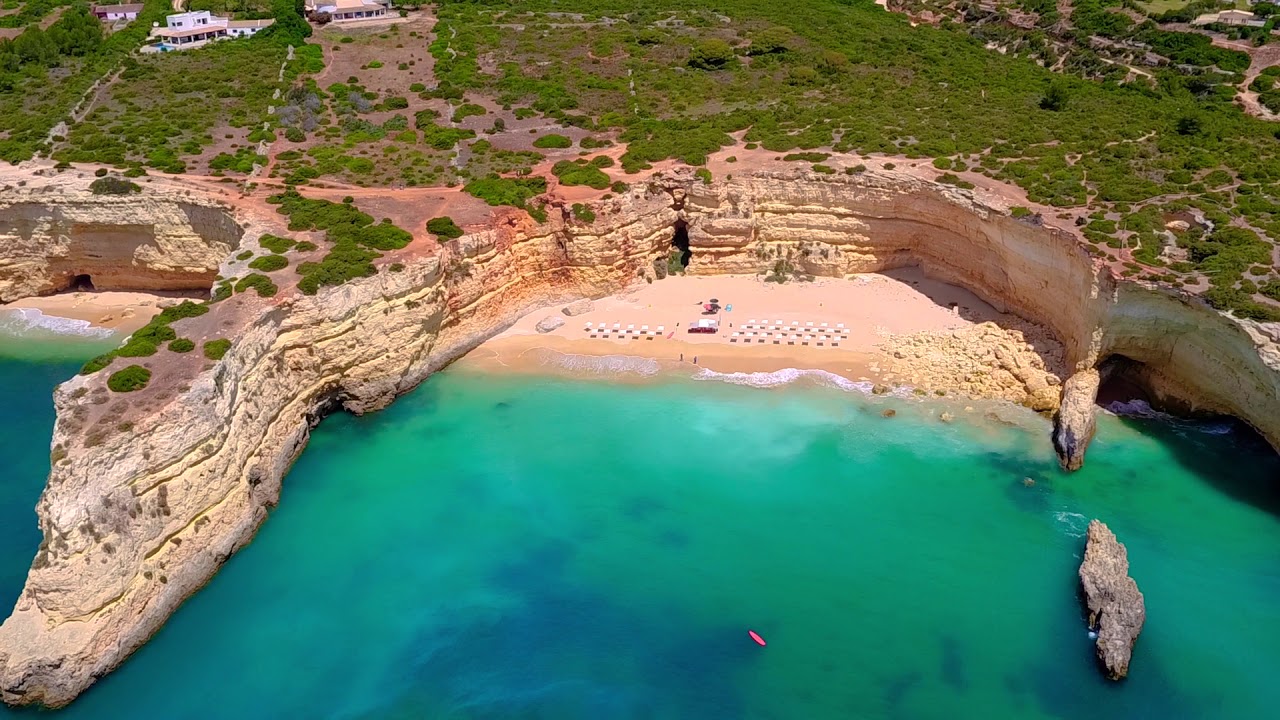

7 Valleys Trail on the cliffs of Lagoa elected the best in Europe Algarve Portugal
The Seven Hanging Valleys of Lagoa, Algarve, were voted “The Best Hiking Destination in Europe” in a ranking promoted by European Best Des... -
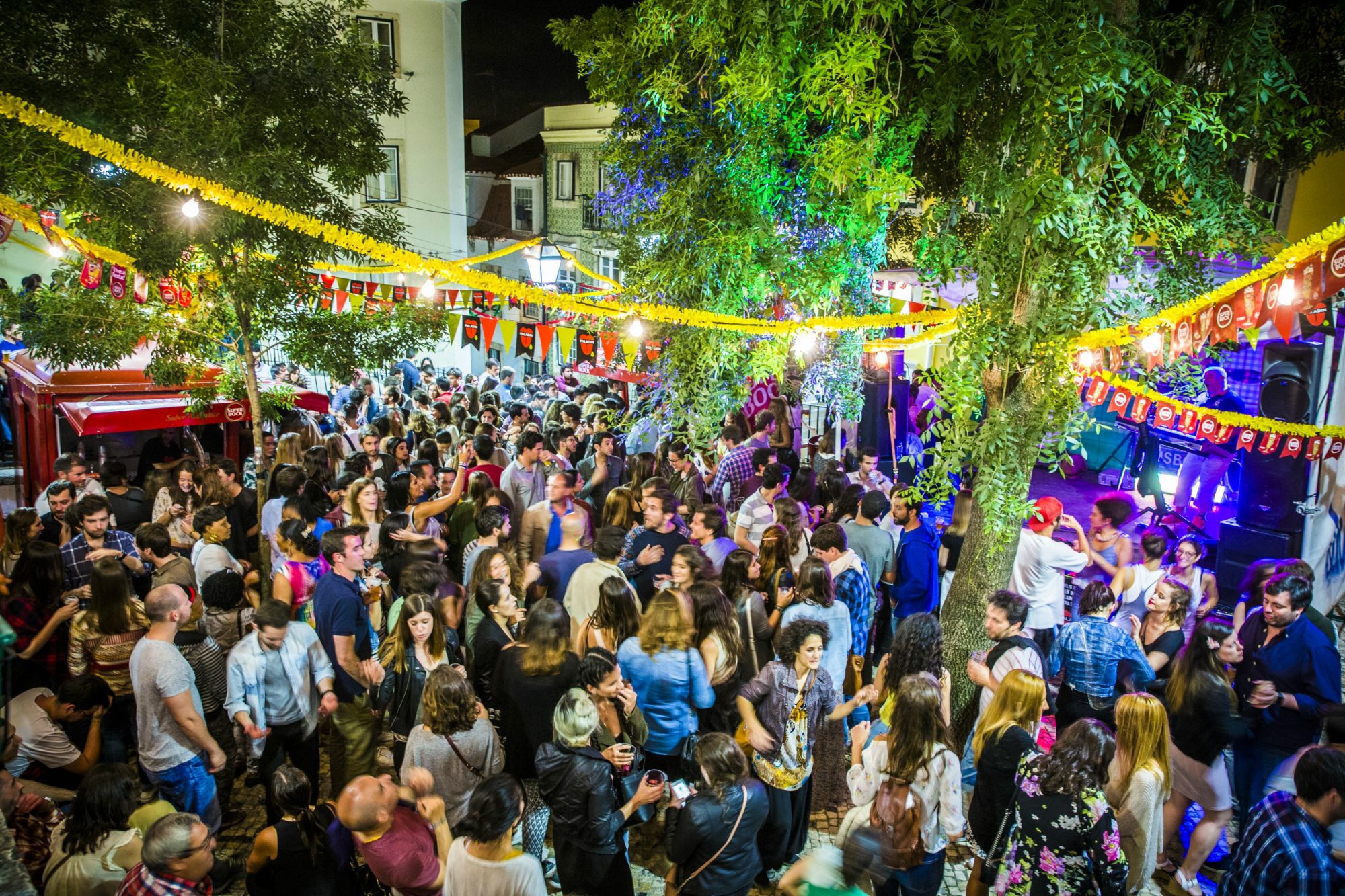

The Holidays of Lisbon begin! This year there are hundreds of free suggestions
The holidays are there and there are initiatives for all tastes. Is it too much? And what do you like? EGEAC, responsible for part of t... -
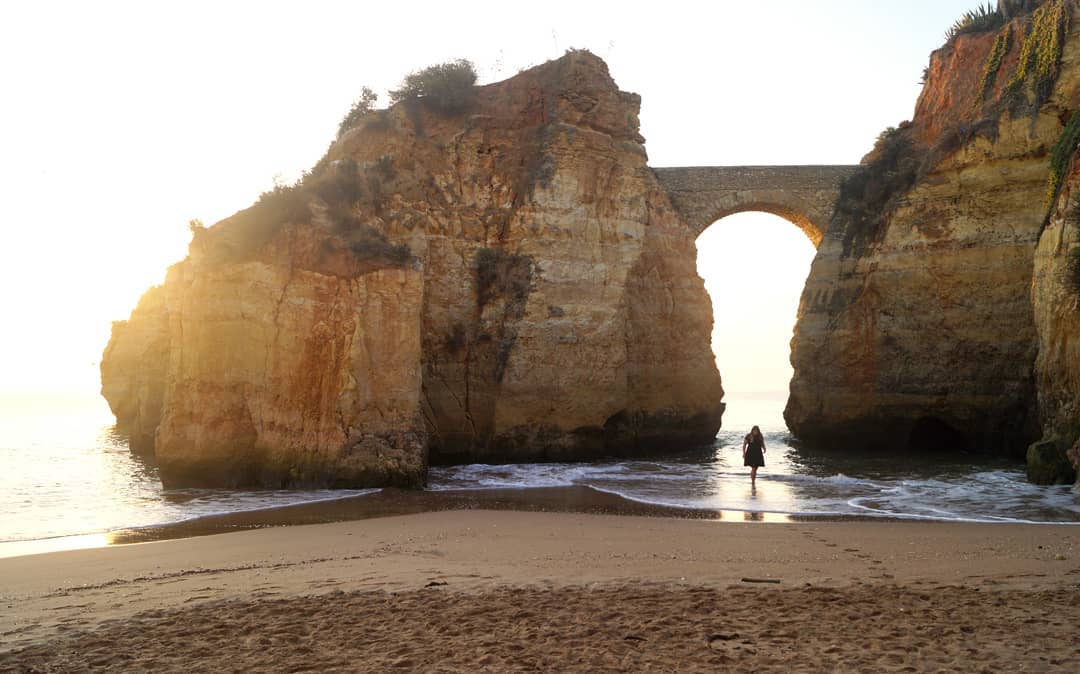

12 paradisiacal beaches in Portugal some almost secret
They do not have the best access, there are no men selling Berlin balls, and in some cases you can see nothing but sand for several kilometers. T... -


Praia da Caminha one of the most secret and deserted in Portugal among the best in Europe
In an area of great beauty by the mouth of the Rio Minho, surrounded by the Pine Forest of the Camarido National Forest, Caminha Beach or Praia do Cam... -
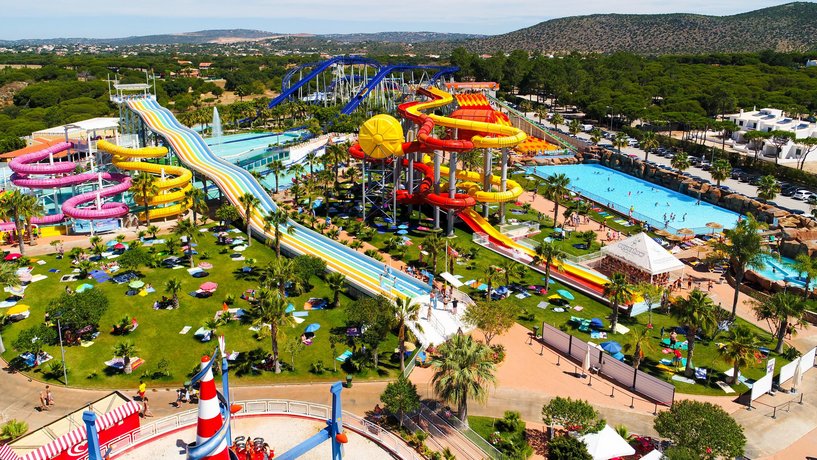

First water park covered by the Iberian Peninsula will be in Algarve Portugal
The Algarve will have the first covered water park of the Iberian Peninsula. The space, called Tropical Paradise, is being built inside the ... -
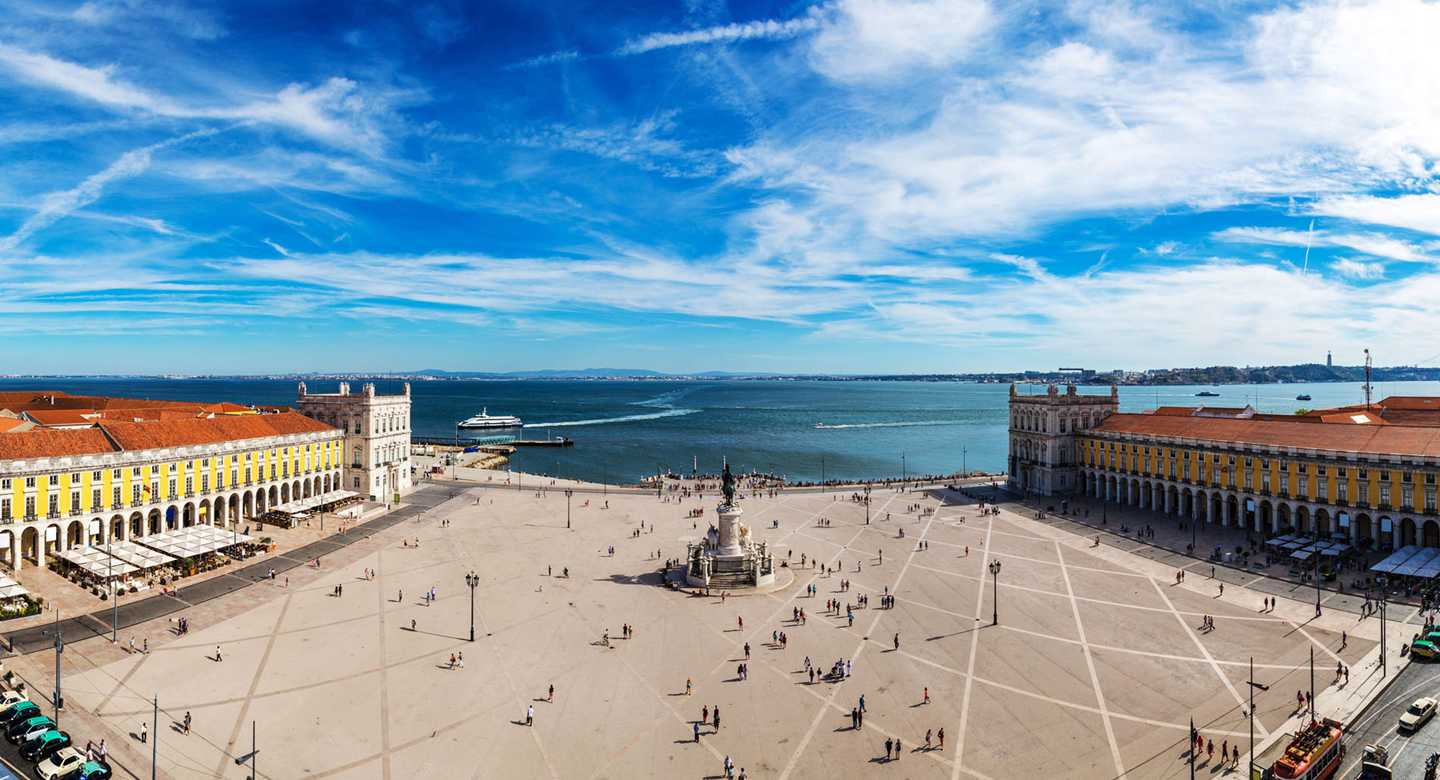

This square is the 12th largest in Europe Portugal in 5th
The Praça do Comércio , formerly the Palace Square , is a square in downtown Lisbon &nbs... -
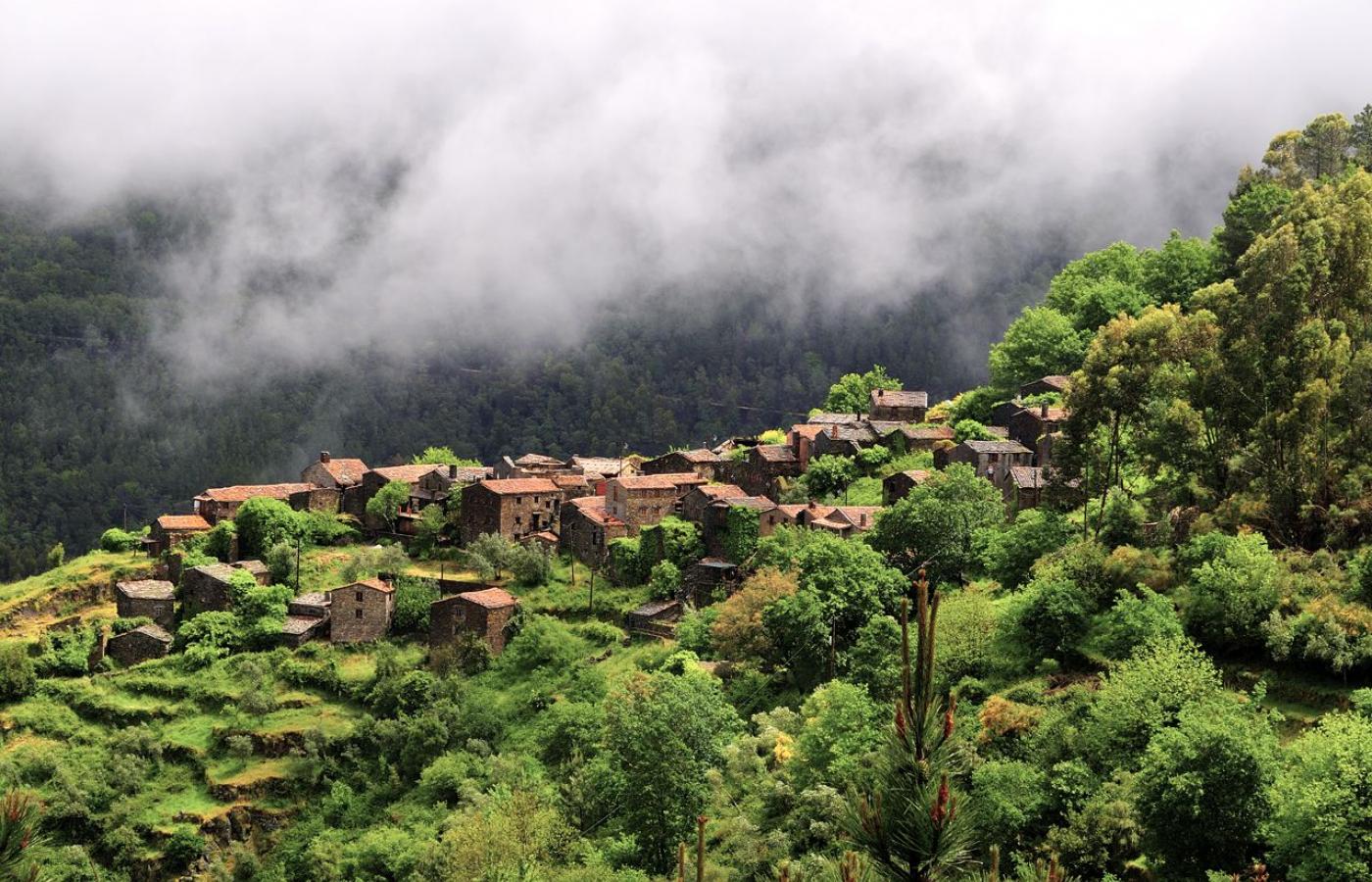

Talasnal village one of the most beautiful in schist Portugal
This has long been the Serra da Lousã Schist Village that has given more visibility and charisma to the whole. For its size and layout, bu... -


Apulia Beach With the beauty of its windmills and long sandy beach, this is the most sought after beach in northern Portugal
The colors are what most mark, on a first visit, the eyes of those who pass by. Because Apulia Beach is a colorful and well-disposed beach, perfe...
